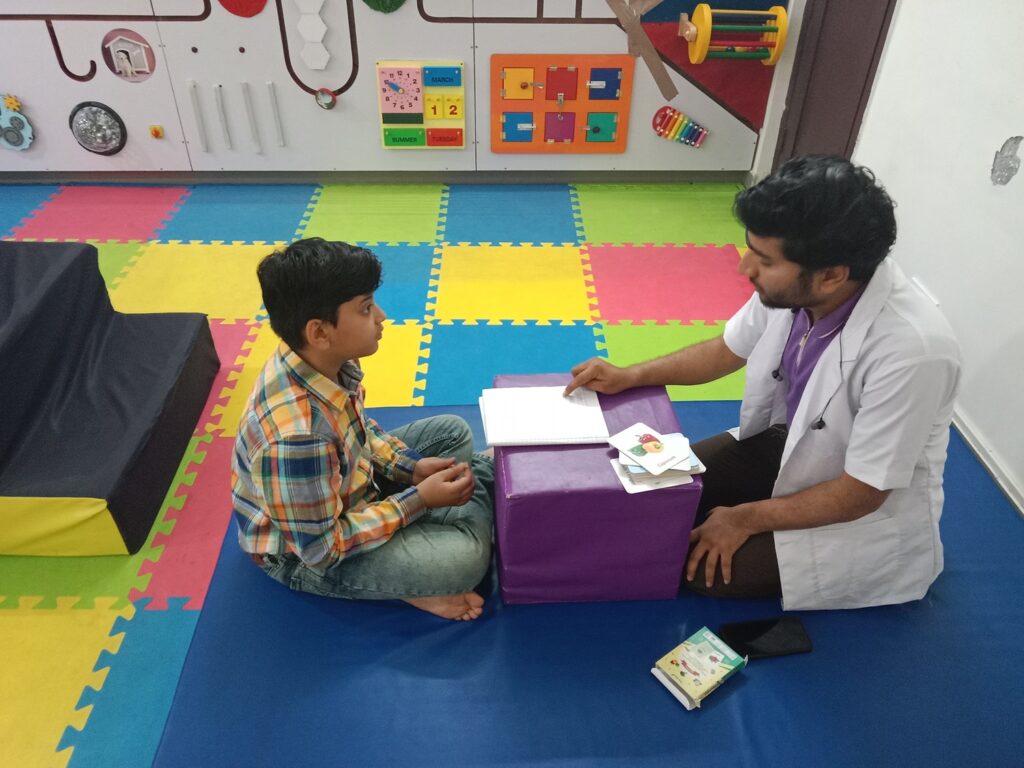
Special Education
Special education is a specialized field dedicated to supporting the learning needs of individuals with disabilities. It’s not just a place or a classroom, but rather a set of services and supports tailored to each student’s unique strengths and challenges
Special education teachers play a central role in implementing individualized interventions and supporting students with disabilities in the classroom. They collaborate with other educators, parents, and related service providers to create inclusive learning environments that promote academic success, social integration, and independence for students with disabilities
1.Individualized Education Plan (IEP):Develop and implement an IEP for each student, outlining specific goals, accommodations, and services tailored to their needs.
2.Early Intervention:Early identification and intervention are essential to address learning and developmental challenges as soon as possible.
3.Differentiated Instruction:Modify curriculum and teaching methods to accommodate individual learning styles and needs.
4.Adaptive Materials:Use specialized teaching materials and tools, such as Braille, audio books, or assistive technology, to accommodate students with disabilities.
5.Assistive Technology:Integrate technology solutions, such as screen readers, communication devices, and educational apps, to support learning and communication.
6.Behavior Intervention and Support:Provide behavioral therapy and interventions to address behavioral challenges, promoting a positive and inclusive classroom environment.
7.Speech and Language Therapy:Offer speech therapy and language intervention for students with communication disorders or speech impairments.
8.Social and Emotional Learning:Implement programs and interventions to enhance social and emotional skills, focusing on self-regulation and interpersonal relationships.
9.Inclusion Support:Foster inclusion by providing specialized support within mainstream classrooms, allowing students with disabilities to learn alongside their peers.
10.Parent and Caregiver Involvement:Engage parents and caregivers in the education process, providing guidance and strategies for supporting students at home.
11.Regular Progress Monitoring:Continuously assess student progress and adjust interventions as needed to ensure goals are met.
12.Transition Planning:Prepare students with disabilities for life beyond school by developing transition plans that address post-graduation goals.
13.Teacher Training and Professional Development:Provide educators with the training and resources needed to effectively support students with disabilities.
Special education therapy is based on a team approach that involves educators, therapists, parents, and support staff. The ultimate goal is to ensure that every student, regardless of their abilities or challenges, has access to a meaningful and inclusive education that supports their development and future success.
Special education teachers play a central role in implementing individualized interventions and supporting students with disabilities in the classroom. They collaborate with other educators, parents, and related service providers to create inclusive learning environments that promote academic success, social integration, and independence for students with disabilities
- Individualized Education Plan (IEP):
- Develop and implement an IEP for each student, outlining specific goals, accommodations, and services tailored to their needs.
- Early Intervention:
- Early identification and intervention are essential to address learning and developmental challenges as soon as possible.
- Differentiated Instruction:
- Modify curriculum and teaching methods to accommodate individual learning styles and needs.
- Adaptive Materials:
- Use specialized teaching materials and tools, such as Braille, audio books, or assistive technology, to accommodate students with disabilities.
- Assistive Technology:
- Integrate technology solutions, such as screen readers, communication devices, and educational apps, to support learning and communication.
- Behavior Intervention and Support:
- Provide behavioral therapy and interventions to address behavioral challenges, promoting a positive and inclusive classroom environment.
- Speech and Language Therapy:
- Offer speech therapy and language intervention for students with communication disorders or speech impairments.
- Social and Emotional Learning:
- Implement programs and interventions to enhance social and emotional skills, focusing on self-regulation and interpersonal relationships.
- Inclusion Support:
- Foster inclusion by providing specialized support within mainstream classrooms, allowing students with disabilities to learn alongside their peers.
- Parent and Caregiver Involvement:
- Engage parents and caregivers in the education process, providing guidance and strategies for supporting students at home.
- Regular Progress Monitoring:
- Continuously assess student progress and adjust interventions as needed to ensure goals are met.
- Transition Planning:
- Prepare students with disabilities for life beyond school by developing transition plans that address post-graduation goals.
- Teacher Training and Professional Development:
- Provide educators with the training and resources needed to effectively support students with disabilities.
Special education therapy is based on a team approach that involves educators, therapists, parents, and support staff. The ultimate goal is to ensure that every student, regardless of their abilities or challenges, has access to a meaningful and inclusive education that supports their development and future success.




